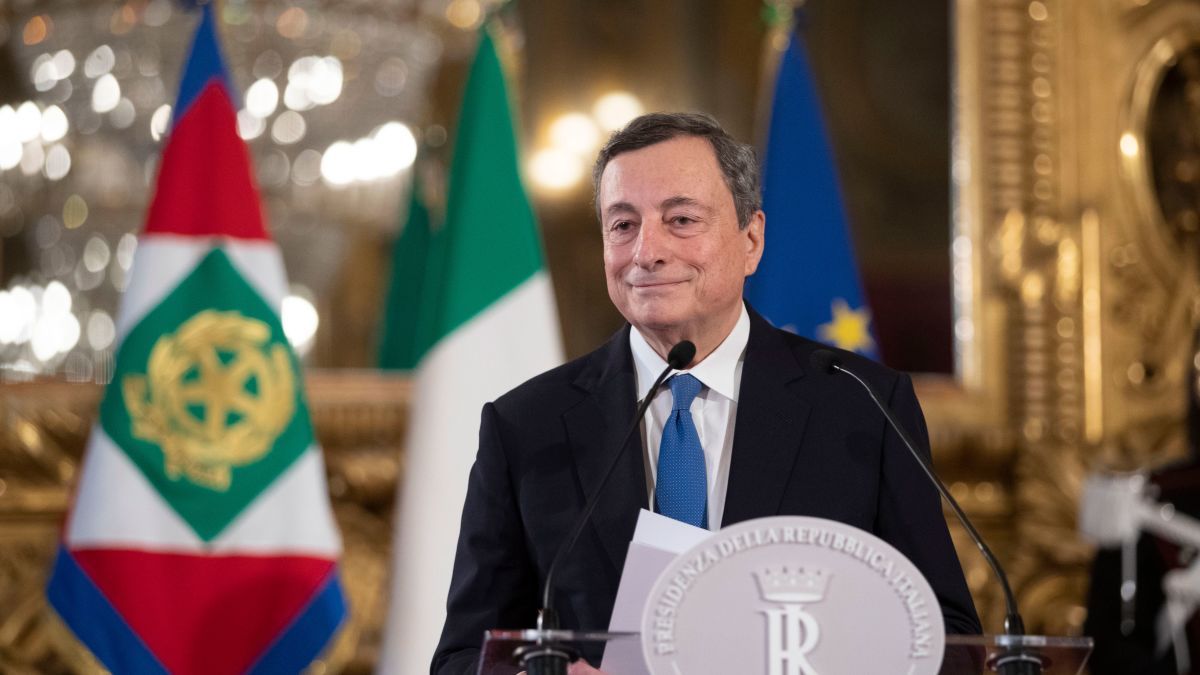On February 13, 2021 Italy formed a new coalition government under Mario Draghi, former President of the European Central Bank and Governor of the Banca d’Italia. Draghi was asked to establish a government by Italian President Sergio Mattarella after the collapse of the governing coalition under former Prime Minister Giuseppe Conte. Conte’s government collapsed after a small party led by former PM, Matteo Renzi, pulled out of the coalition. The move initially plunged Italy into political turmoil as it faced a host of crises—most notably a worldwide pandemic, an economic crisis, and a debt crisis second to only Greece (Dominioni, 2021). However, the short-term turmoil caused by the government’s collapse may yet bring a brighter future for the country as “Super Mario” takes the reins of power. His government has a coalition featuring every political party in Italy save for the far-right Brothers of Italy (The Economist 2021b). Even Eurosceptic parties have jumped on board. As part of the EU Covid-19 relief package known as Next Generation EU, the new PM also has €209 billion worth of EU grants and loans at his disposal to rebuild the economy, and he, currently, has popular support to gain backing for structural reforms that will be a hard sell for many Italians.
Draghi’s popular support derives from his days as head of the European Central Bank (ECB). As head of the ECB, Draghi became famous for his statement “whatever it takes,” which he gave in a speech in London during the middle of the Eurocrisis. The phrase was meant to highlight the ECB’s commitment to the Euro at a time when many thought the single currency project was certain to collapse (A. Walker, 2019). Draghi’s plan to solve the crisis was to buy bonds from countries whose debt put them at risk of dropping out of the Euro; however, the ECB never actually bought any bonds in that instance—the plan was enough to lower borrowing costs and spur the markets into action. Draghi is also lauded for devising new policies to maintain inflation near the target level (below but near 2%) and spur economic growth (A. Walker, 2019).
Draghi’s appointment as Prime Minister of Italy is being heralded as the return of technocracy (Laterza, 2021) and has brought hope to other EU countries. A weakened Italy has been harmful to the EU for over a decade and prosperity in other member states has made Euroscepticism popular in the country. Other EU leaders now anticipate a realignment of Italian priorities with less Euroscepticism and a stronger economy. This would entail a return for Italy as one of the key power players in the EU alongside Germany and France. The current head of the ECB and Draghi’s successor, Christine Lagarde, said she has “full trust that Mario Draghi will be up to the challenge […] to restart the Italian economy with Europe’s help” (M. Walker & G. Legorano 2021). The hope in Rome, Brussels, Paris, and Berlin is that Draghi will use the EU provided COVID-19 recovery funds to address Italy’s large gender-pay gap, invest in green energy (37% of the funds must be devoted to environmental objectives), and structurally reform Italy’s public administration so as to tackle its mounting debt crisis (The Economist 2021a). Draghi himself has committed to increasing COVID vaccinations and reopening the economy more quickly. He has also indicated he wishes to extend the school year so that students can make up for missed learning, provide funding for enterprises at risk of going out of business, and reform the Italian tax system to encourage domestic and foreign investment (The Economist 2021b).
While certainly achievable, these policy goals will not be easy for Draghi’s government to achieve for multiple reasons. First is the issue of time; elections are scheduled to take place in Italy by early 2023. That gives Draghi and his government at most two years to pass and implement sweeping reforms although early elections are likely (The Economist 2021b). Such a short time frame will make it difficult to achieve Draghi’s long-term goals. Likewise, many of these reforms may prove controversial as extending the school year in Italy proved when the previous government attempted to do this (The Economist 2021b). Tax reform is destined to upset some and bureaucratic reform will likely be met with fierce resistance from the bureaucracy. Thus, Draghi may have to expend quite a bit of political capital to pass these reforms—something he may be unwilling to do if he holds political aspirations to run for president in the next election. Hopes are high in both Italy and Europe that Draghi will be able to right Italy’s path, but correcting a country that has been going the wrong way for so long may prove Draghi’s most difficult task to date.
Further reading:
Mario Draghi, political animal – POLITICO
Mario Draghi is Italy’s best hope but the issues he’ll face are huge | View | Euronews
Mario Draghi’s First Speech as Prime Minister Calls for Unity – The New York Times (nytimes.com)
Bibliography:
Dominioni, I. (2021, February 10). A Portrait of Mario Draghi, Italy’s choice to overcome its (Many) Crises. Forbes. https://www.forbes.com/sites/irenedominioni/2021/02/07/a-portrait-of-mario-draghi-italys-choice-to-overcome-its-many-crises/?sh=38135c4e2622.
The Economist. (2021, February 20). Whatever it takes: Mario Draghi begins the toughest job in European politics. https://www.economist.com/europe/2021/02/20/mario-draghi-begins-the-toughest-job-in-european-politics.
The Economist. (2021, February 13). No time for foot-Draghing: Mario Draghi is set to become Italy’s next prime minister. https://www.economist.com/europe/2021/02/13/mario-draghi-is-set-to-become-italys-next-prime-minister.
Laterza, V. (2021, February 19). Technocracy is back in Italy – but with a different agenda. Al Jazeera. https://www.aljazeera.com/opinions/2021/2/19/technocracy-is-back-in-italy-but-with-a-different-agenda.
Walker, A. (2019, October 23). Mario Draghi: His legacy after Eight tumultuous years at the ECB. BBC News. https://www.bbc.com/news/business-50020948
Walker, M., & Legorano, G. (2021, February 3). Italy, and Europe, look to Mario Draghi to solve another crisis. Wall Street Journal. https://www.wsj.com/articles/mario-draghi-is-asked-to-form-a-government-in-recession-hit-italy-11612354601.
